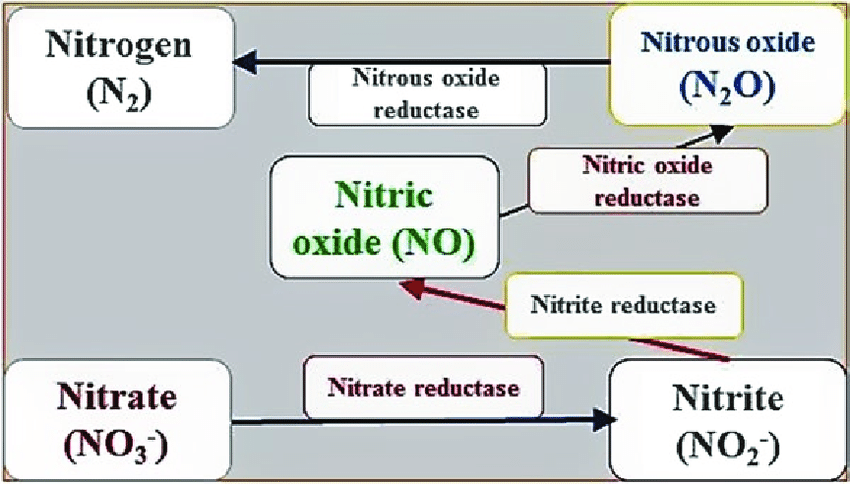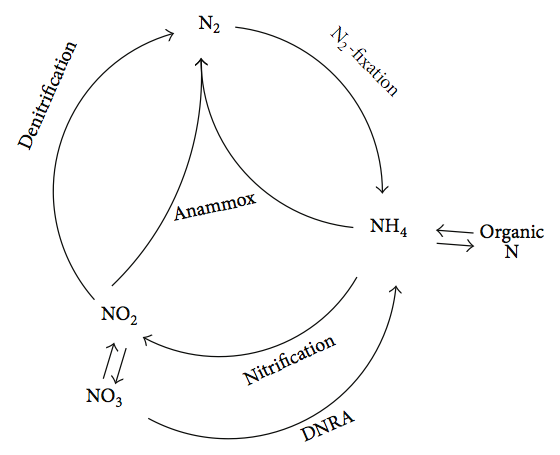What is required for bacteria to use nitrate/nitrite as electron acceptor (AKA alternative oxygen source)
- Many bacteria can use nitrate but not all can use nitrite. Your goal is to develop cultures that an convert all NOx into N2 gas. This process actually h as multiple steps that include 4 enzyme pathways.
- Denitrification happens with many substrates (electron donors) - this includes soluble organics (sugars, alcohols, starches) but can also include chemoautotrophic organisms such as sulfur and metal oxidizing bacteria. This last group is being researched as Autotrophic Denitrification (AuDen). However, most systems denitrify best with typical wastewater heterotrophic bacteria including Thauera, Zooglea, & Pseudomonas.
- Anoxic conditions are necessary to trigger denitrification. When D.O. is present, the bacteria obtain more energy using oxygen as an electron acceptor. Inside dense floc, biofilms, or aerobic granular sludge can have anoxic zones that denitrify inside aerobic basin. This is part of the appeal of MBBR and aerobic granular sludge systems. You do not have to manage the anoxic zone redox potentials (ORP) or residence time as closely as you would in conventional aerobic activated sludge.
- Always consider residence time, temperature, and availability of suitable electron donor (food) for the bacteria in the denitrification zone. Failure in any variable can be a problem. Denitrification to N2 gas often takes action by several different organisms (although a few can take it to N2 gas inside a single cell).



 RSS Feed
RSS Feed